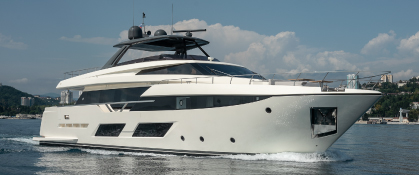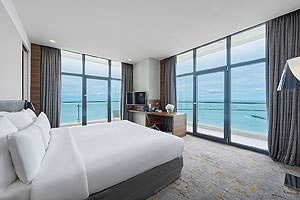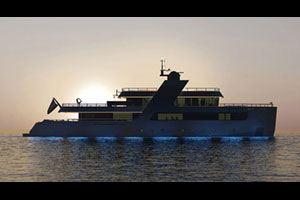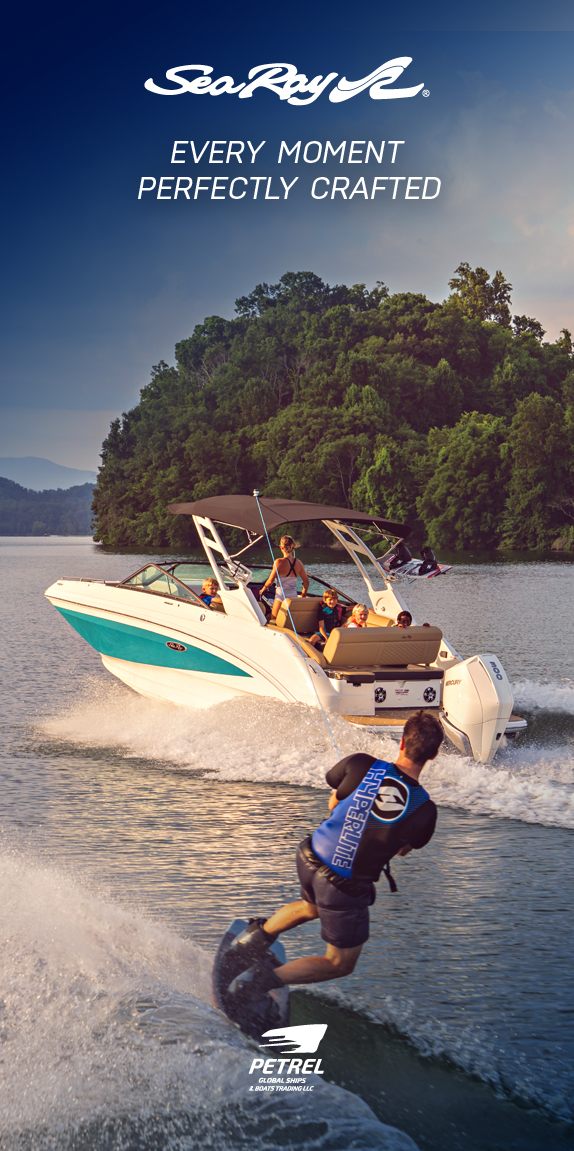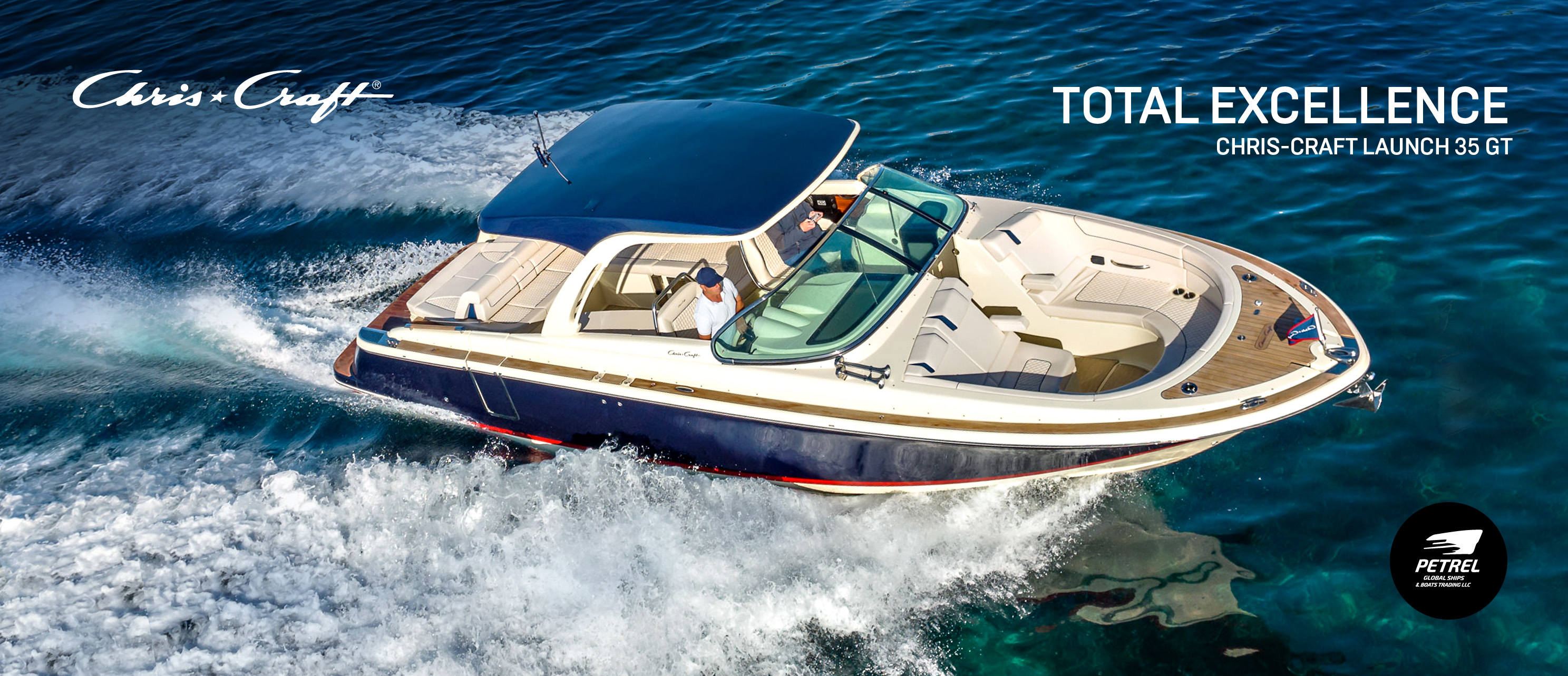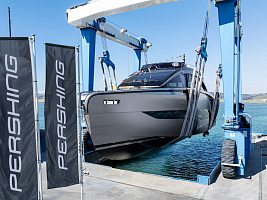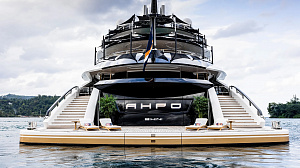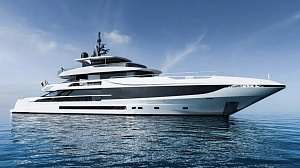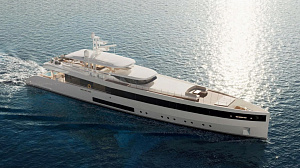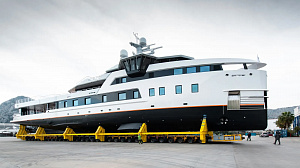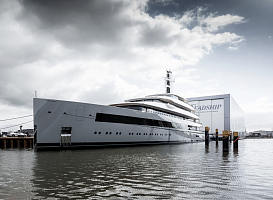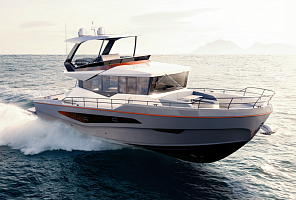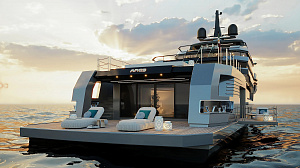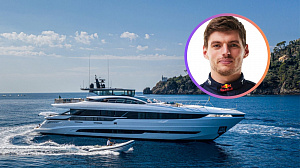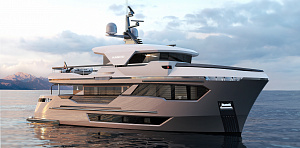




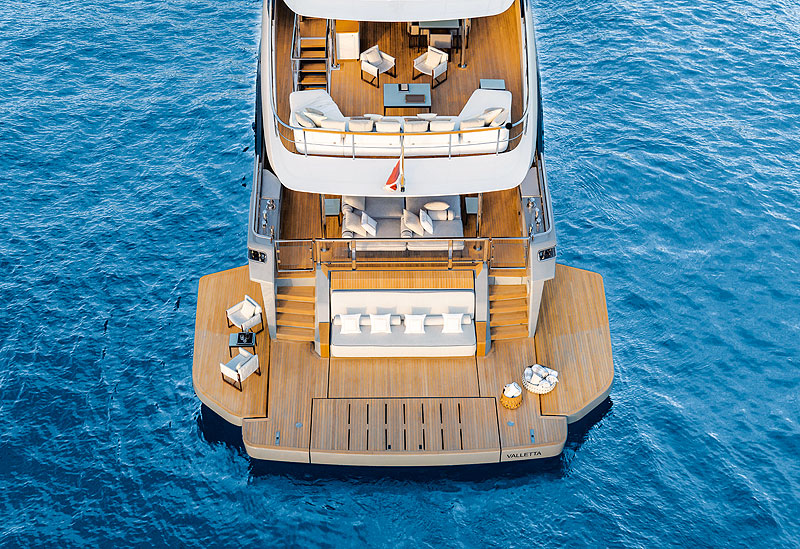
The Ferretti Group has high hopes for this model, to be showcased at both Cannes Yachting Festival and Monaco Yacht Show in September, and already presented to a select audience in front of the Belmond Cirpiani Hotel in Venice last May.
Her predecessor, the Custom Line Navetta 37, created for the shipyard's 20th anniversary, proved to be quite a success, but circumstances intervened. In 2025, new emission control regulations will come into force throughout the Mediterranean. To comply with the new requirements, all new superyachts will have to be fitted with a selective catalytic reduction system, which requires additional space in the engine room. This was one of the main concerns when Ferretti Group decided to ‘upgrade’ the Navetta 37. It soon became obvious that it would be easier to design a new yacht than to adjust the existing. In addition to technical requirements there was a huge feedback from the owners of the ‘37’ for the designer of the range, Filippo Salvetti, to build upon. Working on the exterior of the Navetta 38, he also had to keep in mind the new flagship Navetta 50, which was being developed simultaneously. Both yachts were to form a complex system of links and parallels in the design to outline the new Custom Line identity.

The clear stylistic choices create a sense of quiet strength, elegance, stability and confidence. Salvetti says he was guided by ‘shapes and lines that evoke a sense of continuity and permanence, inspired by the classical principles of simplicity and purity’. Details should be complementary, understated and unobtrusive.
The new model retains the generic Navetta features: the noble arrowhead profile, the bevelled through windows in the bow of the main deck, the spacious sundeck. The pale grey hull, which seems to change the color tone depending on the light, contrasts with the black and white superstructure elements.
The yacht's owner is particularly fond of fresh sea air, and the sundeck is a speciality of his heart. At 15 metres long and 70 square metres in area, it is 20% larger than the sundeck of Navetta 37 and rivals that of Navetta 42. The space is equally well appointed both for socializing and lazing in the Mediterranean sunshine. But, of course, the main attraction here are the bubbles of the Delos Pro spa pool, one of the best Jacuzzi models for four on the market, with a lounger seat, a wide rim and a U/V water purification system. The pool is immersed in a stepped, customised wooden structure. Next to the sofa is a wetbar with a fridge and ice maker, as well as a sink and grill, so you can cook hot snacks right upstairs too.
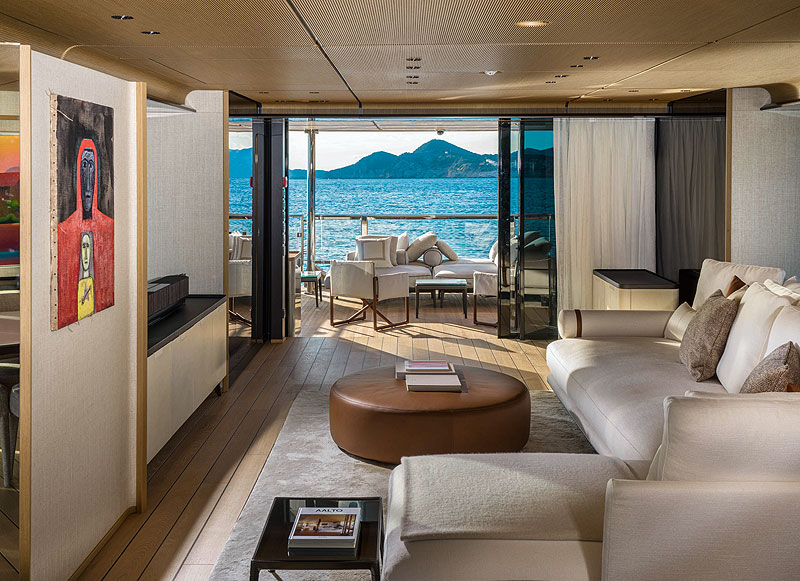
The new Custom Line superyacht has a completely new stern layout. In the past, the Navetta 37 was designed with a swim platform wrapped around the garage door. This could be raised or lowered to make it easier to launch the tender, creating a beach club-like structure with a canopy. This approach was patented by the Ferretti Group under the name Dual Mode Transom. As is fashionable today, the side sections of the Navetta 38's bulwarks are lowered, making the bathing platform wider than many 50 metre yachts! There is also an added length. To open the garage, the swim platform is lowered and the adjacent panel with a built-in settee is raised to allow the tender to slide out.
The cockpit and the swim platform form a single space for relaxation. Upstairs, above the bathing platform, a conventional fixed aft sofa or sunbed are substituted by four modules of the low and soft Ribes sofa pushed together (the piece was created for B&B Italia by Antonio Citterio, one of Telli's interior designers). Now the large sofa can be divided, unfolded or moved sideways, and the position of the headrests can be changed. This offers a complete freedom of space arrangement and comfort for guests. Metal rails with glass bulwarks do not interfere with the view when you are half lying on this sofa, like an ancient Roman on his bed, and admiring the white caps at sea. Another advantage is that the open space of the main deck is stylistically unified with the main salon, sporting the furniture from the same line.
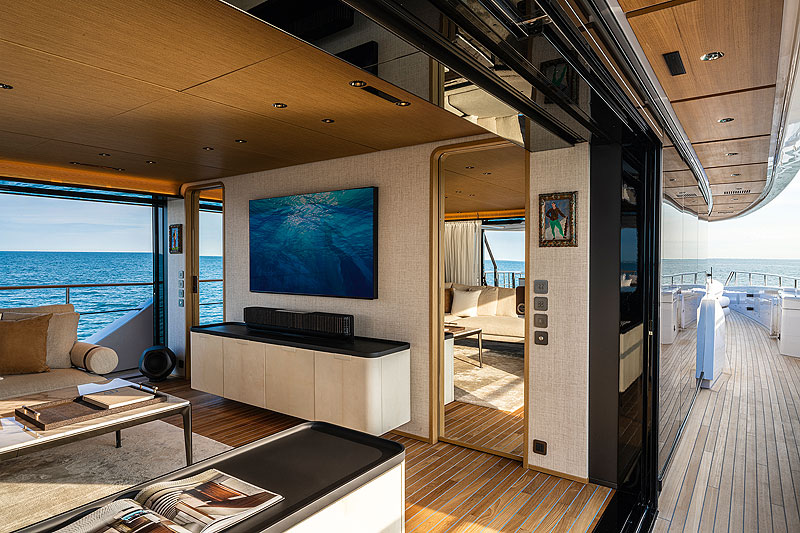
Of course, the client is free to employ his own designer, but the interiors of the first hull were designed by Antonio Citterio and Patrizia Vielle from ACPV, responsible for the interior concept of all new Custom Line yachts. They are one of the most renowned design tandems in Italy and are also versatile. Vielle herself loves yachts and the sea, and designs ‘floating villas’ with as much, if not more, enthusiasm as when working on land-based residences and hotels around the world, from Rome to Taipei. She emphasises that she does not want to give the client the illusion of a city mansion. On the contrary, it is worth emphasising nautical details in the interior, but subtly, without falling into banality. The designer calls the sea wave motif and large windows that let in plenty of natural light the main components of harmony between the interior and exterior. The corners of doorways and wall joints are rounded, which often makes them appear to merge with the floor or ceiling. Without a professional eye, you'll hardly notice that the radii of the complex curves are repeated in different details of the finishes and furniture throughout the boat, but they create a symphony.
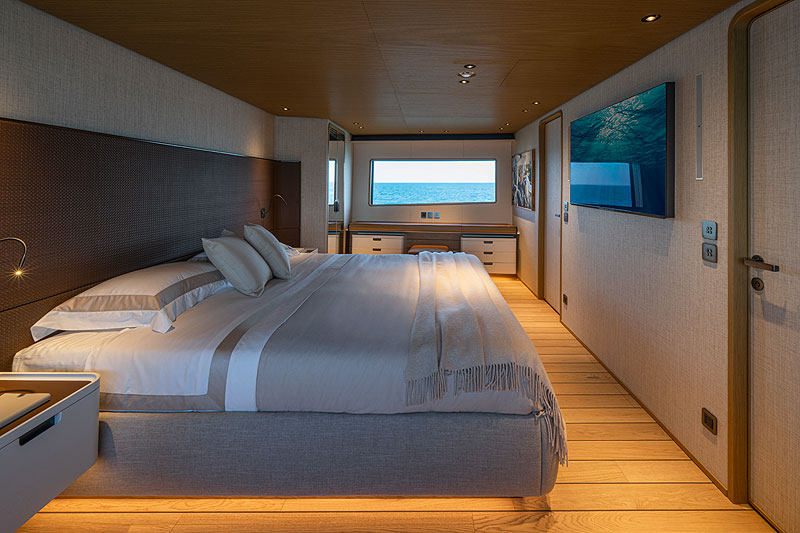
The upper deck is divided between an open dining area with a table for ten, a saloon and deckhouse with a captain's cabin and a forward lounge. The walls of the sky lounge are completely glass, with thin black frames, which immediately make you forget that you are sitting in a pavilion on the top of a hill. Just press a button to make the transparent doors slide apart and the saloon becomes one with the dining area, sheltered from the sun by the sandecker overhang. The forward seating area with sofas, loungers and tables is the best place to gather for a casual breakfast overlooking the sea.
The main deck is planned quite traditionally. The main saloon consists of a lounge area with a large TV and a formal dining area. The ceilings are over 2 metres high and the large windows enhance the feeling of a vast, light-filled space with defined boundaries. On southern nights, the salon glows like a magic lantern. It should be noted that almost all furniture in the large saloon and sky lounge, as well as in cabins and open areas, is selected so that the crew can easily move it, changing the situation even every day. The sofas are modular, the chests of drawers are on elegant slender legs, the chairs and tables are light and graceful. You will be pleasantly surprised at how many hidden storage spaces there are for glassware and china. But most importantly, it feels like an art exhibition. The walls of Telli are hung with works by Andy Warhol, Fernando Botero, Mimmo (Domenico) Paladino and Salvo (Salvatore Maggiore). Among the works of high art, the TV screen would look a bit plain - it comes down from under the slatted ceiling and is tucked into it.
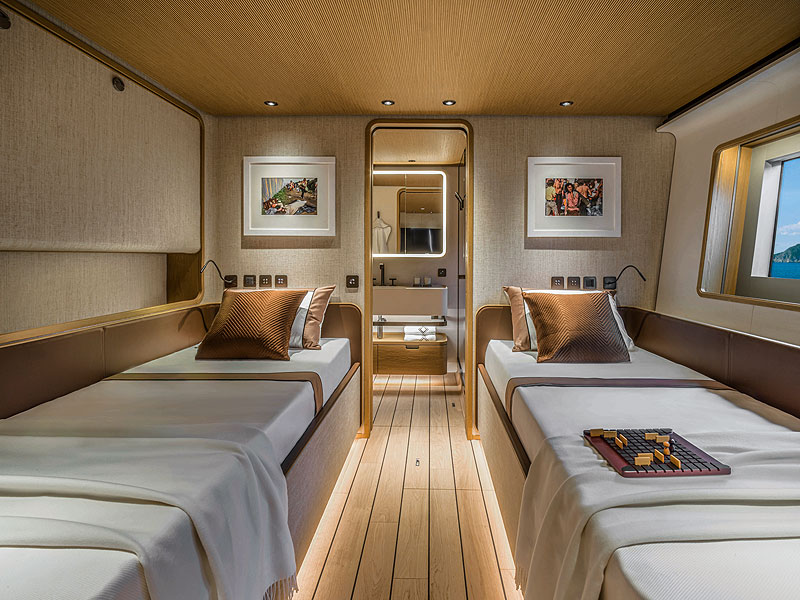
Next to the saloon, a large galley and a spacious pantry have been designed, so it will be convenient for the cook to cook for guests and the stewards to serve meals.
The forward section is dedicated to the master stateroom. The bed is covered by a three-sided screen. Oak is used most generously in the owner's suite and other rooms. The slatted ceiling, light-coloured floorboards, window frames and furniture fronts are made of it. The walls are covered with raffia. Woody and earthy tones prevail. In such an environment, simple and noble, one leaves the hustle and bustle of business at the doorstep and quickly regains strength. The symmetrical bathroom is in warm colours. On the sides of the common wooden shower cubicle are washbasins and his and hers toilets. Instead of marble, Crema d'Orcia limestone (used by Renaissance sculptors) has been used. The stone is polished and then coated with a transparent primer, which will help it to last longer in the sea.
In plan, the owner's suite resembles the letter P turned on its side. The spacious bedroom is preceded by a corridor with a banquette and a dressing table in a niche covered with the same fabric as the screen in the headboard. The total area of the master is 40 square metres.
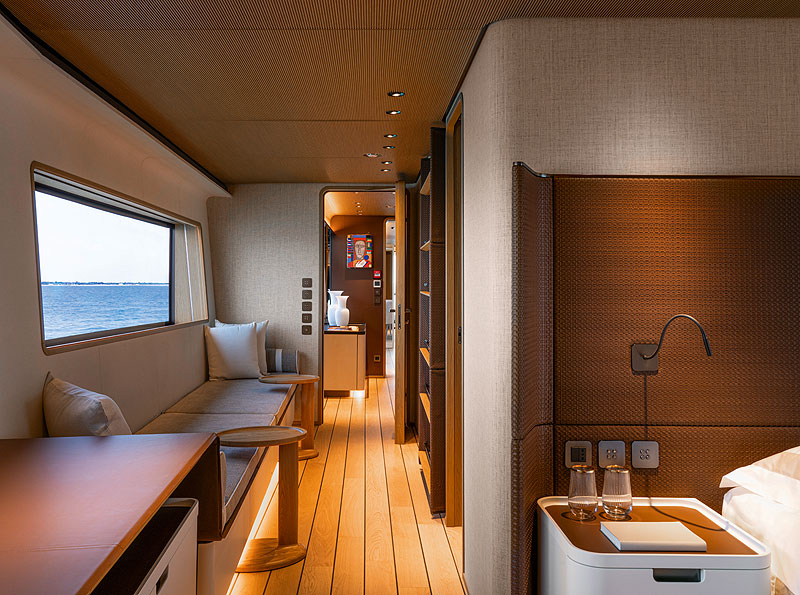
On the lower deck, four guest cabins surround the lobby. Exactly in the middle of the hull are two VIPs, while closer to the bow are a cabin with a double bed and another with two singles. The interiors of the cabins and their bathrooms are decorated in the same style as the master. The theme of natural light and generous spaces flooded with light, key to the design of the Navetta 38, is also evident here, with the yard claiming that they have managed to cut ‘some of the largest windows on the market’ into the hull.
The crew on board will be comfortable. The captain will have an enlarged deckhouse with a new layout. The crew quarters are located forward on the lower deck. There are three cabins with bathrooms and showers, as well as a small dining area for six people. There is also space for storage and laundry.
The semi-displacement hull with bulbous hull provides optimum seaworthiness and efficiency in a wide range of speeds and sailing conditions. With low fuel consumption and performance that is excellent in its category, the yacht is ideal for long distance cruising. Two 1400 hp MAN engines are fitted as standard. They propel the boat to a maximum speed of 15 knots. A range of around 2,800 nautical miles at an economical speed of 10 knots means that you can safely sail around the Mediterranean Sea on a single tank.
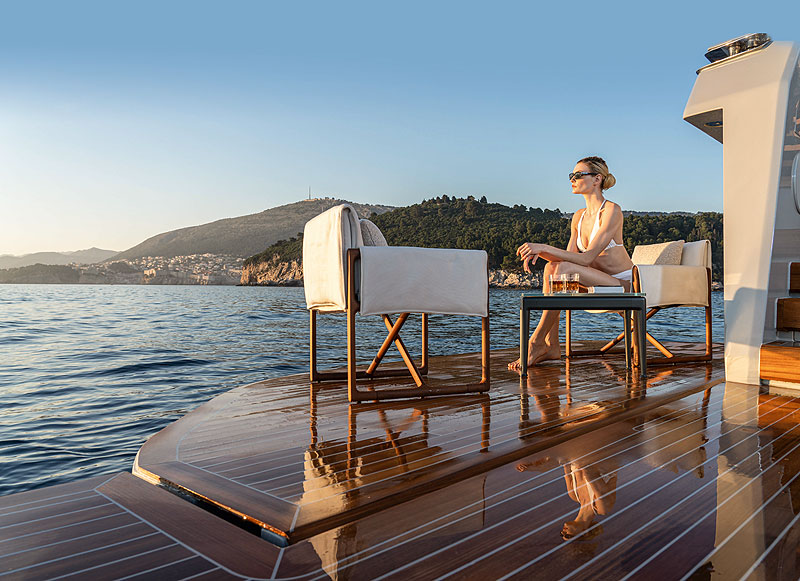
The Selective Catalytic Reduction (SCR) system that started it all is still optional. For the Navetta 38, it will reduce nitrogen oxide emissions by 70 per cent, which meets the requirements of the IMO Tier III environmental standard. Rocking at anchor is counteracted by two Naiad Dynamics vane stabilisers, which are larger in area than those on the 37 (2.4 square metres), as well as three Seakeeper gyrostabilisers. The idea is that the two methods are suited to different situations, for example in a busy marina it is difficult to use ‘fins’ as the yachts are close together. So you have to rely on gyro stabilisers.
Custom Line is renowned for its exceptional soundproofing, and the Navetta 38, with her cult of comfort, has thought of this in every detail. In addition to state-of-the-art insulation in the bulkheads, she features a floating floor. Between it and the fibreglass of the hull is a layer of soundproofing material, so that no transmission noise, footsteps or conversations in neighbouring rooms reach the guest areas. The drivetrain utilises vibration dampening hinge joints and the exhaust system utilises high efficiency mufflers. The lower deck windows are specially designed to reduce noise. Foam core doors are fitted with rubber gaskets that drop down when closed to reinforce the noise-absorbing seal around the frame. A quiet Heinen & Hopman air conditioning system is installed.
And who is the owner of Telli, whose taste is so evident in both the furnishings and the choice of artworks? It is... the head of the Ferretti Group, Alberto Galassi. In the interests of the business, he opened his own superyacht for viewing.
